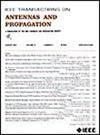OAM Backhaul Link Supporting 1 Tbps Over 1-km Transmission Based on Cassegrain Antennas
IF 4.6
1区 计算机科学
Q1 ENGINEERING, ELECTRICAL & ELECTRONIC
引用次数: 0
Abstract
Orbital angular momentum (OAM) beams present an inverted cone form and divergence. Consequently, the transmission distance and rate of the backhaul link based on OAM are severely limited. On the other hand, in the upcoming beyond fifth-generation (B5G) mobile communications and sixth-generation (6G) mobile communications, the demand for communication distance between the macro base station (BS) and the self-backhaul small cell (SBSC) ranges from hundreds of meters to several kilometers, and the demand for transmission rate ranges between 100 Gb/s and 1 Tbps. The OAM beam generated by the uniform circular array (UCA) exhibits inverted cone divergence. The difference in divergence angle between different modes can be two times or even more than three times. This makes it impossible to achieve long-distance and high-speed transmission simultaneously. In order to construct a 1-km and Tbps OAM transmission system, this article proposes a symmetric OAM transmission scheme using cassegrain antennas (CAs). The CAs can converge the OAM beams and achieve high antenna gain. When the antennas are strictly coaxially aligned, backhaul links supporting a 1-km transmission distance and a 1-Tbps transmission rate are constructed. Furthermore, the effectiveness of the backhaul link transmission scheme using symmetric CAs is verified through mathematical models, simulations, and experiments.基于卡塞格伦天线的支持1tbps超过1km传输的OAM回程链路
轨道角动量(OAM)光束呈倒锥状发散。因此,基于OAM的回程链路的传输距离和速率受到了严重的限制。另一方面,在即将到来的超过第五代(B5G)移动通信和第六代(6G)移动通信中,宏基站(BS)与自回程小蜂窝(SBSC)之间的通信距离需求从数百米到几公里,传输速率需求在100 Gb/s到1 Tbps之间。均匀圆形阵列(UCA)产生的OAM光束呈现倒锥发散。不同模式的发散角相差可达2倍甚至3倍以上。这就不可能同时实现远距离和高速传输。为了构建1 km和Tbps的OAM传输系统,本文提出了一种使用卡塞格伦天线(cassegrain antenna, CAs)的对称OAM传输方案。该增益放大器可以使OAM波束收敛,从而获得较高的天线增益。当天线严格同轴对准时,将构建支持1km传输距离和1tbps传输速率的回程链路。此外,通过数学模型、仿真和实验验证了采用对称ca的回程链路传输方案的有效性。
本文章由计算机程序翻译,如有差异,请以英文原文为准。
求助全文
约1分钟内获得全文
求助全文
来源期刊
CiteScore
10.40
自引率
28.10%
发文量
968
审稿时长
4.7 months
期刊介绍:
IEEE Transactions on Antennas and Propagation includes theoretical and experimental advances in antennas, including design and development, and in the propagation of electromagnetic waves, including scattering, diffraction, and interaction with continuous media; and applications pertaining to antennas and propagation, such as remote sensing, applied optics, and millimeter and submillimeter wave techniques

 求助内容:
求助内容: 应助结果提醒方式:
应助结果提醒方式:


